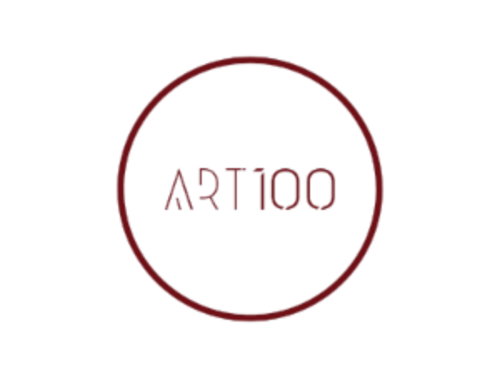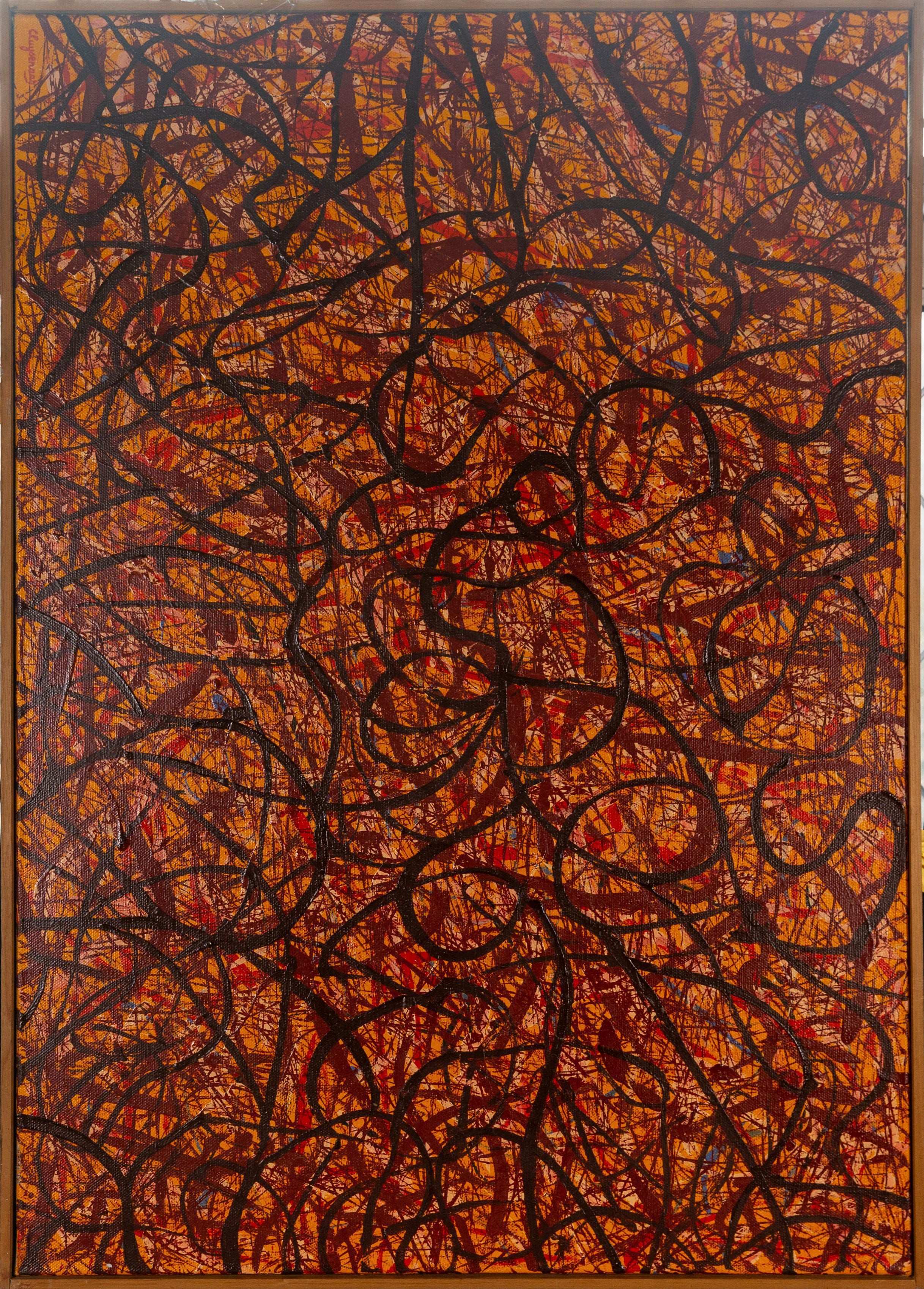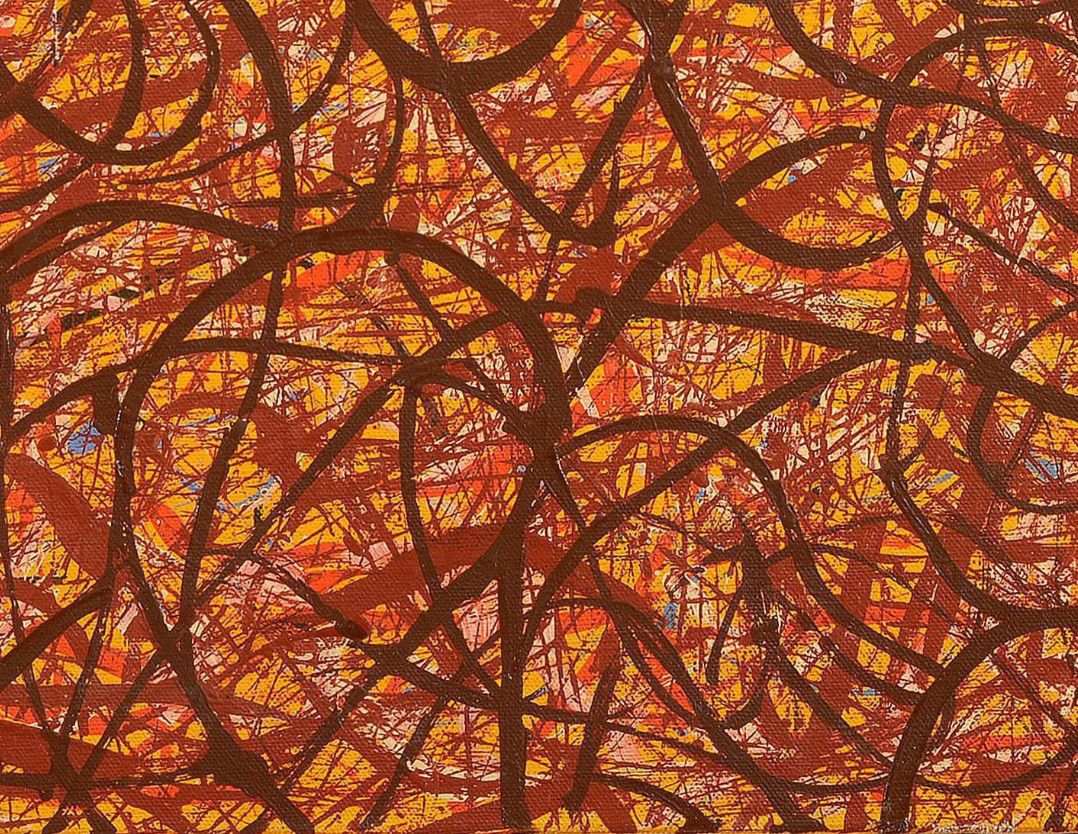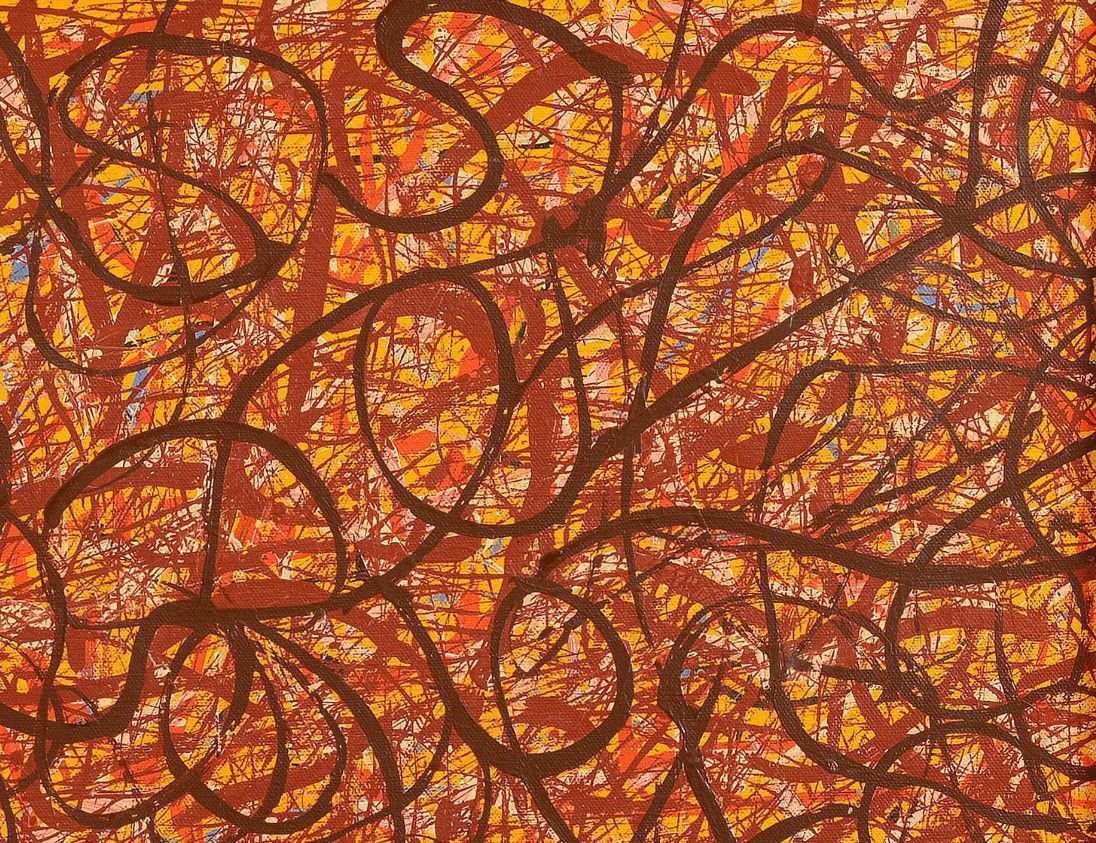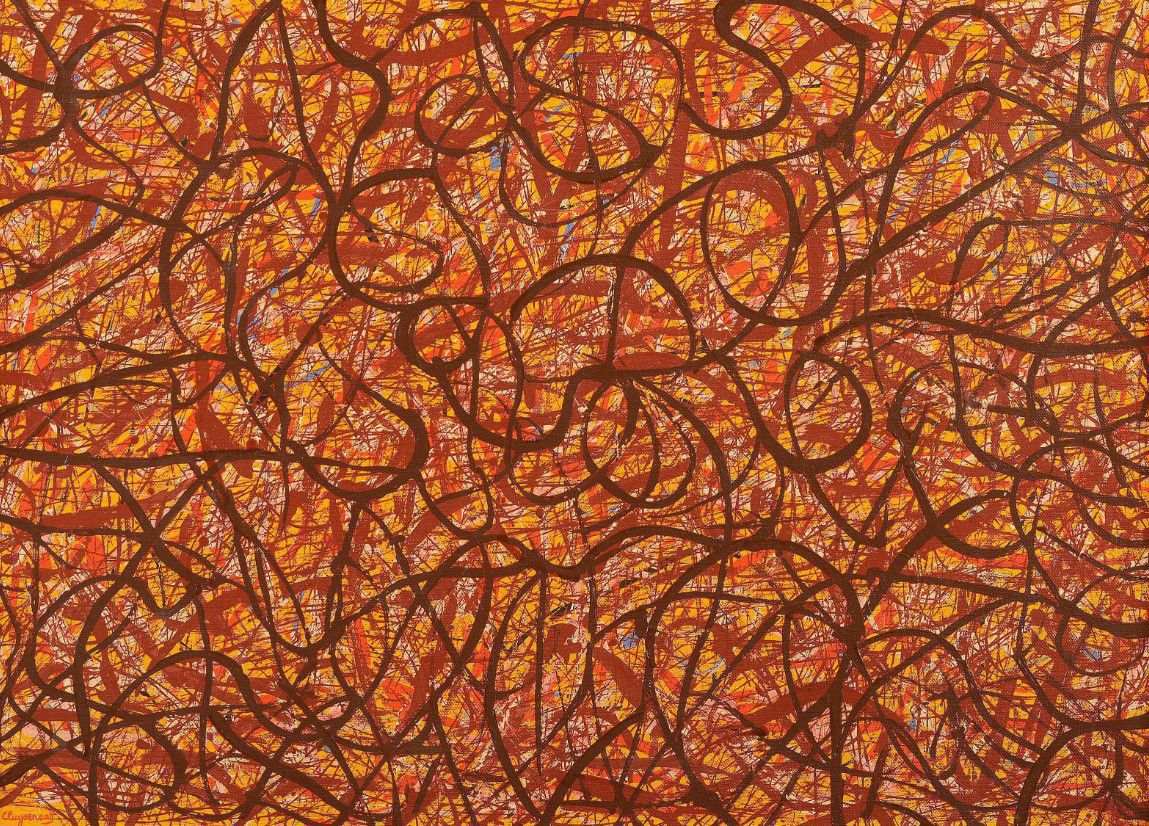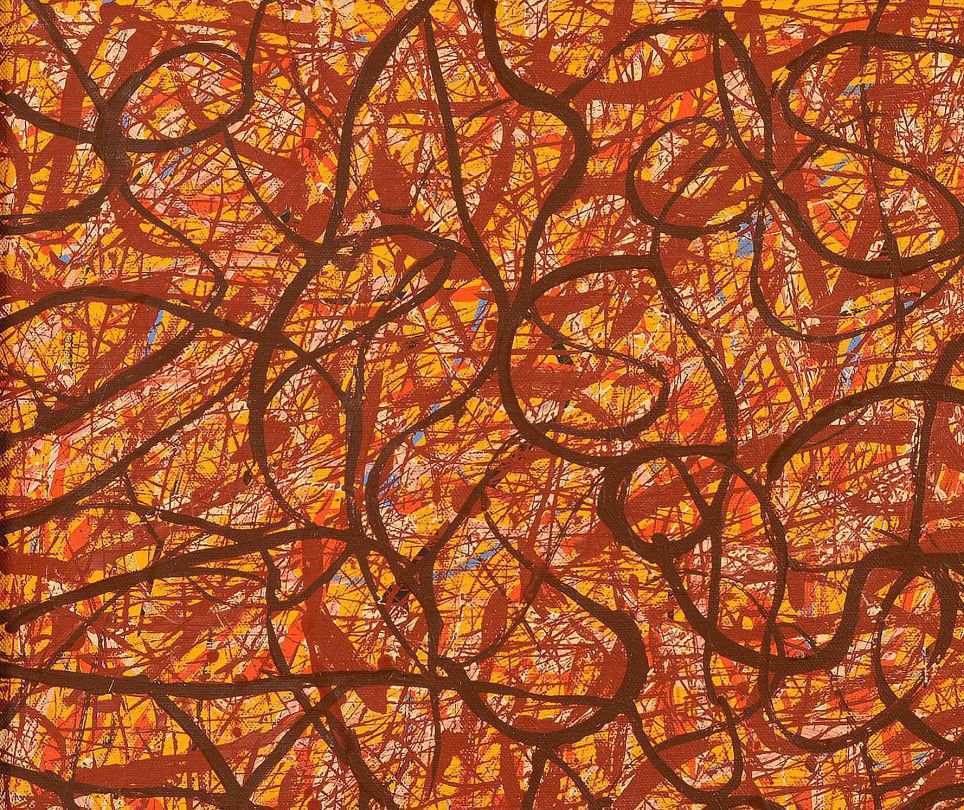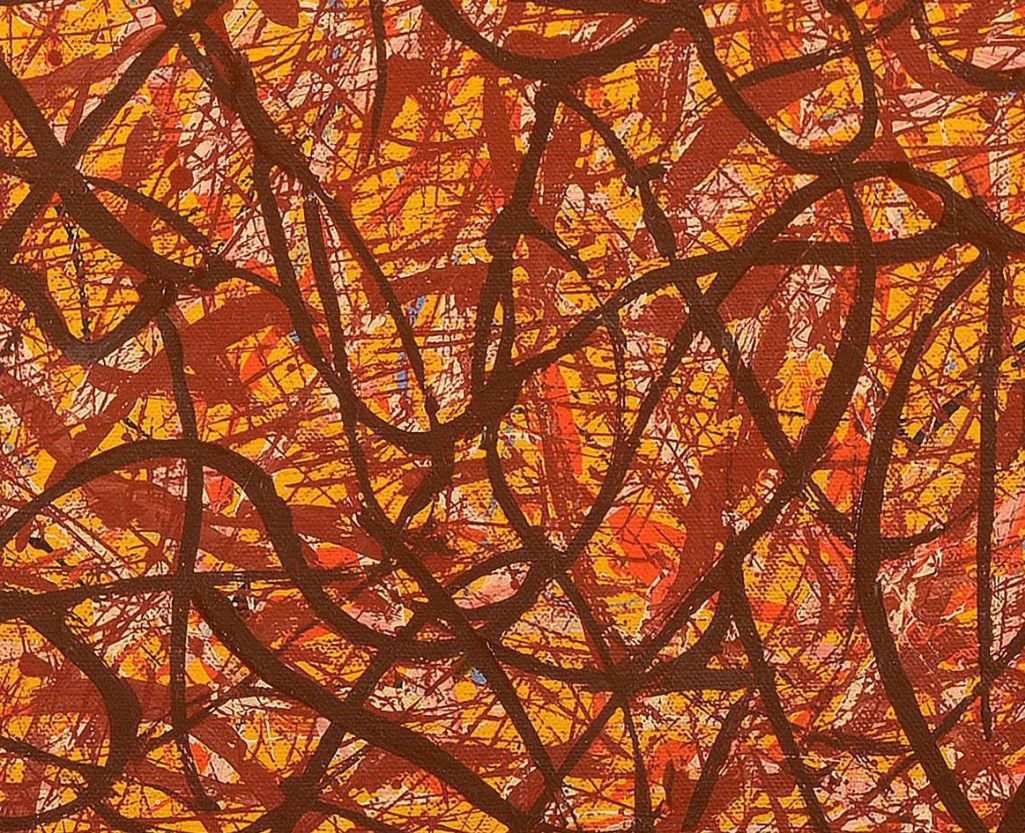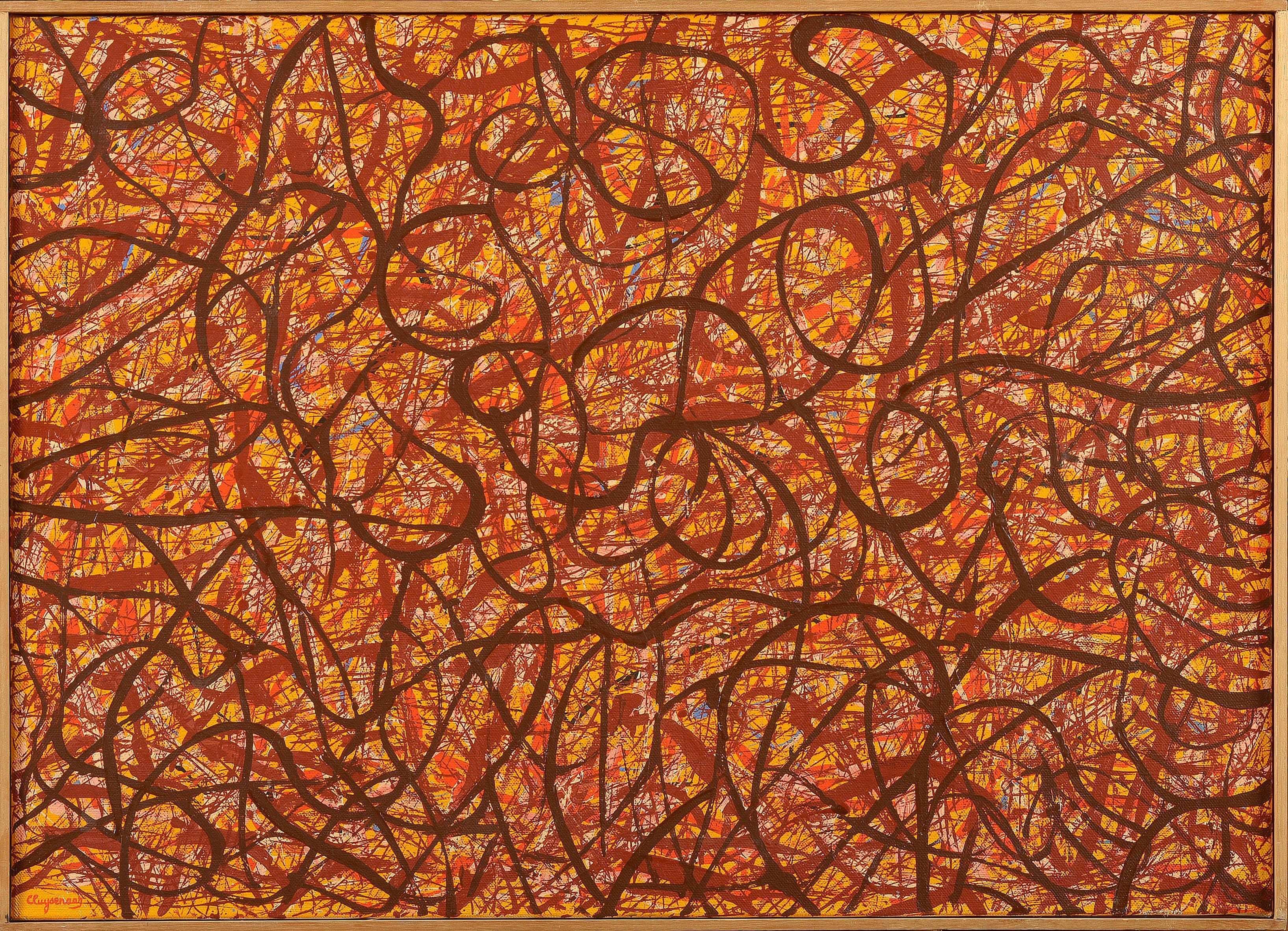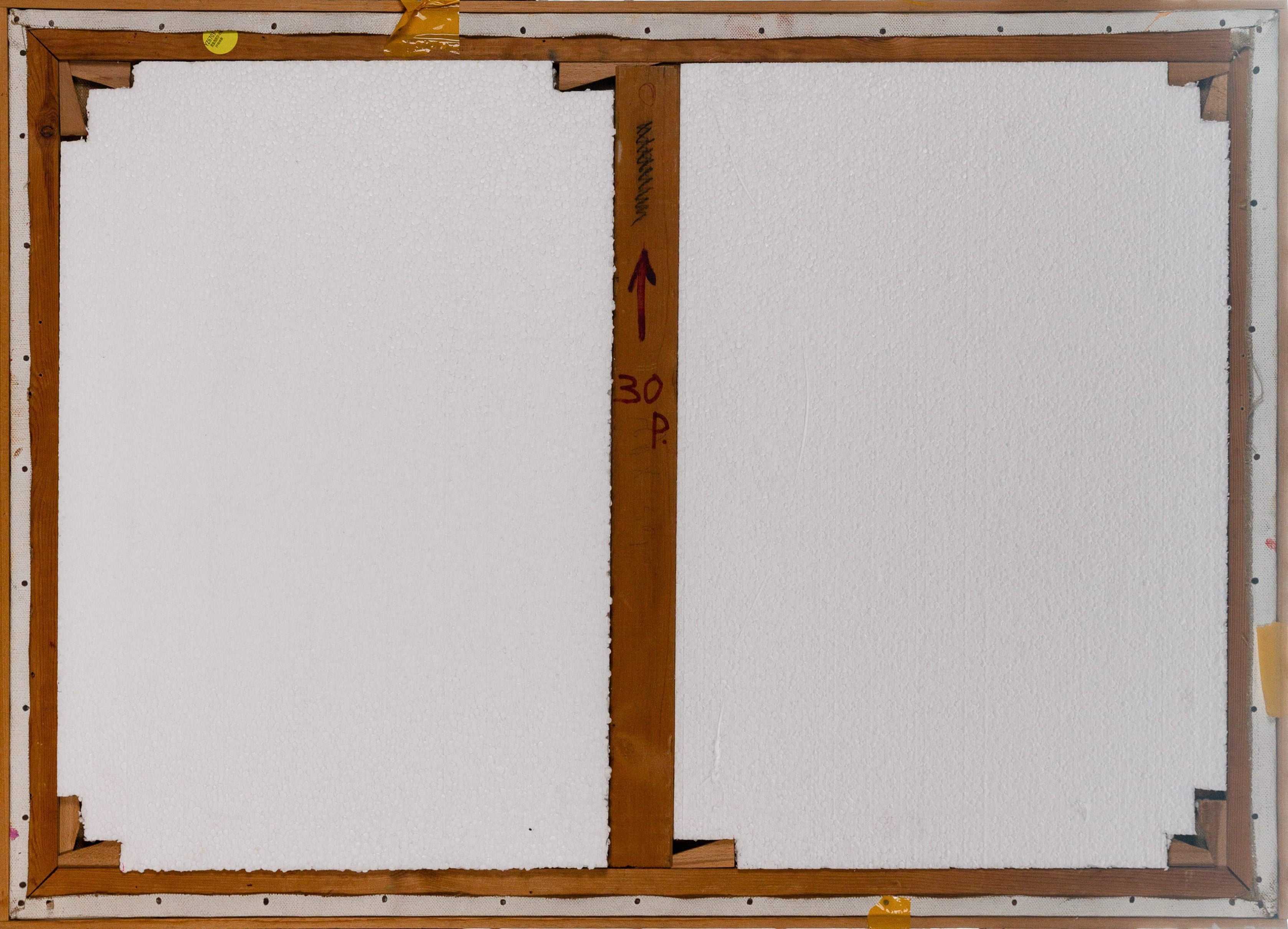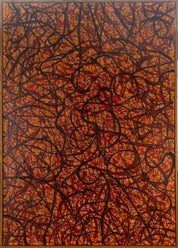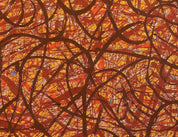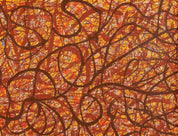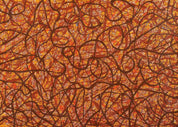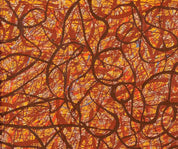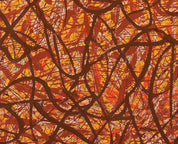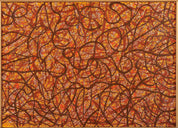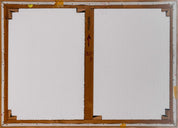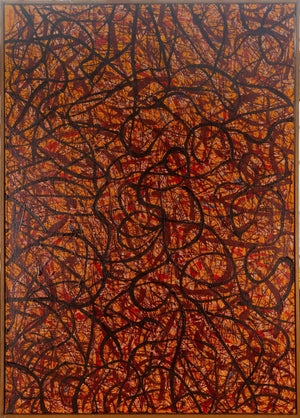Similar Items
John Cluysenaar (1899 - 1986) "Lyrical abstraction"
$4,000.00 USD
Artist: John Cluysenaar (1899 - 1986)
Title: Lyrical Abstraction
Medium: Oil on Canvas
Signature: Signed Lower Left "Cluysenaar"
Period: Around 1960ð Dimensions: 65 cm x 91.5 cm
Step into the lyrical world of John Cluysenaar with "Lyrical Abstraction," an oil on canvas artwork that captures the artist's unique approach to abstraction and emotion.
Measuring 65 cm by 91.5 cm, this piece immerses you in a world of color, form, and expression. Cluysenaar's signature style shines through as he presents a composition that invites interpretation and connection.
The title suggests the presence of a poetic and emotional quality within the artwork, allowing viewers to explore their own reactions and responses. The dimensions of the canvas provide ample space to appreciate the details and nuances of Cluysenaar's brushwork and palette.
The artist's signature in the lower left corner adds authenticity and a personal touch to the piece, signifying his direct involvement in its creation.
"Experience the evocative power of John Cluysenaar's 'Lyrical Abstraction,' an oil on canvas that invites you to explore the realms of emotion and artistic expression. Elevate your collection with this captivating masterpiece that reflects Cluysenaar's unique ability to convey sentiment through abstraction. Secure your connection to the artist's vision and the timeless world of artistic expression by placing your bid today."
Artistic journey
John Cluysenaar, son of the painter André Cluysenaar , saw his father working from an early age. It is quite naturally, by imitation, that little John begins to draw. A solitary teenager, he spent a lot of time filling in sketchbooks. He also executed a few planchettes, landscapes and views. Quickly, his gifts are noted by his father.
In 1919, demobilized and unemployed, he had the opportunity to propose a first relief for a monument to be installed in London in homage to the physicist, Richard Tetley Clazebrook 16 (installed first of all in the entrance hall of the administration building of the National Physical Laboratory, then moved to the Bushy House lecture hall). We notice in this work, an importance of the line delimiting the relief of the profile of the scientist. This primacy of the line, a legacy of years of practice in drawing, is also found in Suzanne Lenglen 's medallion from 1920. It is also noticeable in the funerary monumentof the violinist and professor at the royal conservatory of Brussels, Alexandre Cornélis located in the cemetery of Ixelles.
It is only later that John Cluysenaar will undertake to free himself from relief and will apprehend sculpture holistically. The young sculptor studies and learns quickly. In 1924, he won the prestigious Godecharle prize, the grant of which enabled him to make study trips to France, England and Italy for two years. It was during the second half of the 1920s that the sculptor cut stone and shaped clay in the spirit of Jean-Baptiste Carpeaux , Auguste Rodin or closer to him Rik Wouters .
The following decade will see him produce more public works. These will be busts of political, civil society or cultural figures. For example, in 1935, he installed a full-length representation of the Prince de Ligne in Egmont park in Brussels, on the occasion of the bicentenary of his birth. He also participated in the sculptures that adorn the main entrance to the 1935 Brussels World's Fair by presenting one of the monumental winged figures there . The Belgian state buys several works from him.
At the end of the 1930s, John Cluysenaar decided to stop sculpting, specifying that the most important thing was the line. Note that at this same time, his father, a painter, died (1939) and that this decision also coincided with his departure for England.
During the period of the Second World War, John Cluysenaar expressed himself mainly in watercolors and drawings. He paints few oils on canvas. Undoubtedly the context of the war, the multiple removals contribute to the choice of modes of expression requiring lighter material. These watercolors are executed in an expressionist style, very colorful and luminous. These are mostly interior scenes. During these years, he exhibited in London with Ben Nicholson , among others, who influenced him. He creates some geometric-figurative works. But John Cluysenaar will not join the group of artists who gather in Saint Ives in Cornwall.
The post-war period saw him continue his pictorial research. The spirit of the time leads him towards abstraction. He creates canvases using the “all over” technique. Inspiration for his production of abstract works has often been found in the work of Mark Tobey . The American artist resided in London from 1935 to 1939. John Cluysenaar arrived in London in 1939. There is very little chance that he saw paintings by Tobey, probably reproductions. In the works of this period, there is also an influence of Jackson Pollock 's "dripping" technique.. But the artistic curiosity of Cluysenaar pushes him to research other paths of lyrical abstraction until the end of the 1960s. At the beginning of the following decade, little by little, he introduces into his abstract paintings forms that evoke the human figure. "Around 1970, he recomposed the human figure in reticular geometric rhythms in bright colors, covering the surface with intertwined networks that evoke art brut" .
This return to a certain figuration continued throughout the following years. His pictorial research leads him to want to express the human face in a personal way. Not portraits, but the shape of the face. He seeks to “demolish the representative form”. Without ever succeeding, he devoted himself to this process in the solitude of his studio in the village of Noville-sur-Mehaigne. Denise Lelarge specifies in this regard, in 1985, "The faces are like stained glass windows letting the light of the soul pass through". Every day, he studies the different plastic and chromatic possibilities, fruit of his imagination, until the end of his life, in 1986.
Posterity
Jacqueline Cluysenaar Collier decided in 1987 to create the "John Cluysenaar Foundation" [ archive ] , with the mission of perpetuating Cluysenaar's work and supporting young artists. His collection was donated in 2010 to cultural institutions and museums. Sculptures and paintings from Cluysenaar are kept in private and public collections. Among the latter, we should mention the Museums of Fine Arts in Brussels , Antwerp, Ixelles, Liège , La Louvière, Mons , Ostend and Tournai, the Famenne & Art Museum ( Marche-en-Famenne ), the Wallonia-Brussels Federation , the Province of Walloon Brabant and the Foundation for Contemporary Belgian Art .
Public collections
Royal Museums of Fine Arts of Belgium , Brussels
Royal Museum of Fine Arts of Belgium , Antwerp
French Community of Belgium
Tournai Museum of Fine Arts
Mons Fine Arts Museum
Museum of Fine Arts of Liège
Museum of Fine Arts of La Louvière
Ostend Museum of Fine Arts
Famenne Museum , Marche-en-Famenne
Municipal Museum of Fine Arts of Ixelles
Province of Walloon Brabant
Foundation for Contemporary Belgian Art
Gaspar Museum , Arlon
Awards
Victory Medal in 1919
Medal of the Volunteers in 1919
Knight of the Crown in 1933
Knight of the Order of Leopold in 1951
Title: Lyrical Abstraction
Medium: Oil on Canvas
Signature: Signed Lower Left "Cluysenaar"
Period: Around 1960ð Dimensions: 65 cm x 91.5 cm
Step into the lyrical world of John Cluysenaar with "Lyrical Abstraction," an oil on canvas artwork that captures the artist's unique approach to abstraction and emotion.
Measuring 65 cm by 91.5 cm, this piece immerses you in a world of color, form, and expression. Cluysenaar's signature style shines through as he presents a composition that invites interpretation and connection.
The title suggests the presence of a poetic and emotional quality within the artwork, allowing viewers to explore their own reactions and responses. The dimensions of the canvas provide ample space to appreciate the details and nuances of Cluysenaar's brushwork and palette.
The artist's signature in the lower left corner adds authenticity and a personal touch to the piece, signifying his direct involvement in its creation.
"Experience the evocative power of John Cluysenaar's 'Lyrical Abstraction,' an oil on canvas that invites you to explore the realms of emotion and artistic expression. Elevate your collection with this captivating masterpiece that reflects Cluysenaar's unique ability to convey sentiment through abstraction. Secure your connection to the artist's vision and the timeless world of artistic expression by placing your bid today."
Artistic journey
John Cluysenaar, son of the painter André Cluysenaar , saw his father working from an early age. It is quite naturally, by imitation, that little John begins to draw. A solitary teenager, he spent a lot of time filling in sketchbooks. He also executed a few planchettes, landscapes and views. Quickly, his gifts are noted by his father.
In 1919, demobilized and unemployed, he had the opportunity to propose a first relief for a monument to be installed in London in homage to the physicist, Richard Tetley Clazebrook 16 (installed first of all in the entrance hall of the administration building of the National Physical Laboratory, then moved to the Bushy House lecture hall). We notice in this work, an importance of the line delimiting the relief of the profile of the scientist. This primacy of the line, a legacy of years of practice in drawing, is also found in Suzanne Lenglen 's medallion from 1920. It is also noticeable in the funerary monumentof the violinist and professor at the royal conservatory of Brussels, Alexandre Cornélis located in the cemetery of Ixelles.
It is only later that John Cluysenaar will undertake to free himself from relief and will apprehend sculpture holistically. The young sculptor studies and learns quickly. In 1924, he won the prestigious Godecharle prize, the grant of which enabled him to make study trips to France, England and Italy for two years. It was during the second half of the 1920s that the sculptor cut stone and shaped clay in the spirit of Jean-Baptiste Carpeaux , Auguste Rodin or closer to him Rik Wouters .
The following decade will see him produce more public works. These will be busts of political, civil society or cultural figures. For example, in 1935, he installed a full-length representation of the Prince de Ligne in Egmont park in Brussels, on the occasion of the bicentenary of his birth. He also participated in the sculptures that adorn the main entrance to the 1935 Brussels World's Fair by presenting one of the monumental winged figures there . The Belgian state buys several works from him.
At the end of the 1930s, John Cluysenaar decided to stop sculpting, specifying that the most important thing was the line. Note that at this same time, his father, a painter, died (1939) and that this decision also coincided with his departure for England.
During the period of the Second World War, John Cluysenaar expressed himself mainly in watercolors and drawings. He paints few oils on canvas. Undoubtedly the context of the war, the multiple removals contribute to the choice of modes of expression requiring lighter material. These watercolors are executed in an expressionist style, very colorful and luminous. These are mostly interior scenes. During these years, he exhibited in London with Ben Nicholson , among others, who influenced him. He creates some geometric-figurative works. But John Cluysenaar will not join the group of artists who gather in Saint Ives in Cornwall.
The post-war period saw him continue his pictorial research. The spirit of the time leads him towards abstraction. He creates canvases using the “all over” technique. Inspiration for his production of abstract works has often been found in the work of Mark Tobey . The American artist resided in London from 1935 to 1939. John Cluysenaar arrived in London in 1939. There is very little chance that he saw paintings by Tobey, probably reproductions. In the works of this period, there is also an influence of Jackson Pollock 's "dripping" technique.. But the artistic curiosity of Cluysenaar pushes him to research other paths of lyrical abstraction until the end of the 1960s. At the beginning of the following decade, little by little, he introduces into his abstract paintings forms that evoke the human figure. "Around 1970, he recomposed the human figure in reticular geometric rhythms in bright colors, covering the surface with intertwined networks that evoke art brut" .
This return to a certain figuration continued throughout the following years. His pictorial research leads him to want to express the human face in a personal way. Not portraits, but the shape of the face. He seeks to “demolish the representative form”. Without ever succeeding, he devoted himself to this process in the solitude of his studio in the village of Noville-sur-Mehaigne. Denise Lelarge specifies in this regard, in 1985, "The faces are like stained glass windows letting the light of the soul pass through". Every day, he studies the different plastic and chromatic possibilities, fruit of his imagination, until the end of his life, in 1986.
Posterity
Jacqueline Cluysenaar Collier decided in 1987 to create the "John Cluysenaar Foundation" [ archive ] , with the mission of perpetuating Cluysenaar's work and supporting young artists. His collection was donated in 2010 to cultural institutions and museums. Sculptures and paintings from Cluysenaar are kept in private and public collections. Among the latter, we should mention the Museums of Fine Arts in Brussels , Antwerp, Ixelles, Liège , La Louvière, Mons , Ostend and Tournai, the Famenne & Art Museum ( Marche-en-Famenne ), the Wallonia-Brussels Federation , the Province of Walloon Brabant and the Foundation for Contemporary Belgian Art .
Public collections
Royal Museums of Fine Arts of Belgium , Brussels
Royal Museum of Fine Arts of Belgium , Antwerp
French Community of Belgium
Tournai Museum of Fine Arts
Mons Fine Arts Museum
Museum of Fine Arts of Liège
Museum of Fine Arts of La Louvière
Ostend Museum of Fine Arts
Famenne Museum , Marche-en-Famenne
Municipal Museum of Fine Arts of Ixelles
Province of Walloon Brabant
Foundation for Contemporary Belgian Art
Gaspar Museum , Arlon
Awards
Victory Medal in 1919
Medal of the Volunteers in 1919
Knight of the Crown in 1933
Knight of the Order of Leopold in 1951
Popular Items
